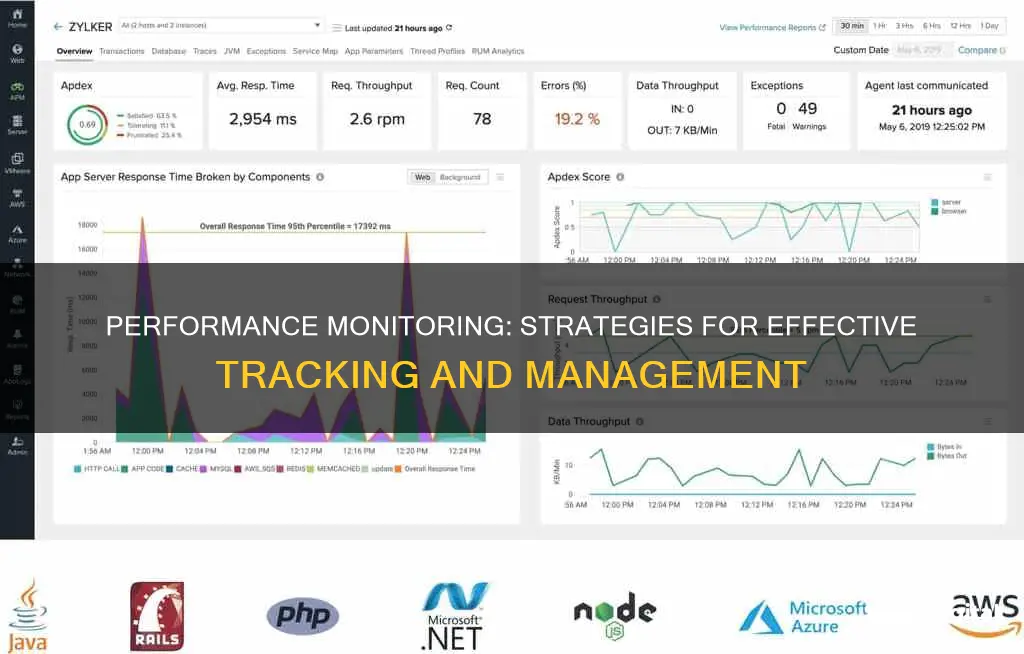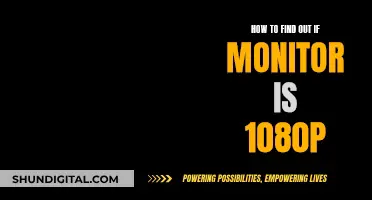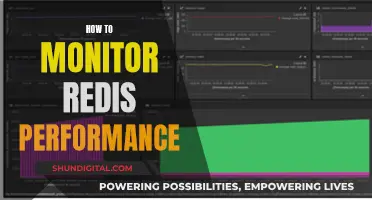
Performance monitoring is essential for any organisation that wants to achieve its goals, motivate its staff, and improve its processes. There are a number of ways to keep track of employee performance, from traditional review styles to self-monitoring methods and automated productivity tools.
Traditional performance reviews are one of the most well-established methods for measuring employee success. They typically take the form of one-on-one meetings between managers and employees, and often include identifying strengths and weaknesses, discussing areas for improvement, and measuring progress toward job goals.
Self-monitoring methods, on the other hand, allow employees to track key performance indicators (KPIs) themselves. Employees can consult with managers on goal setting and then monitor KPIs and track their individual goals independently.
Automated productivity tools, meanwhile, automatically track employee activity during work hours, providing a steady stream of data and insights for managers.
Whichever method or combination of methods is chosen, it is important to set clear, measurable goals, ensure transparency with employees, and maintain regular communication about performance data.
| Characteristics | Values |
|---|---|
| Frequency of official appraisal sessions | Annual or semi-annual |
| Feedback | Two-way, interactive and collaborative |
| Feedback from | Managers, peers, subordinates, clients, self-evaluation |
| Performance parameters | OKRs, KPIs |
| Time management | Time-tracking software |
| Customization | Customizable monitoring software |
| Metrics | Quantitative, qualitative, balanced |
| Market benchmarks | Promotions, compensation, training needs |
| Long-term results | High performers, potential leaders, development needs |
| Employee involvement | Self-monitoring tools, goal-setting |
What You'll Learn

Watch employees work
Watching employees work is one of the most effective ways to monitor their performance. This can be done in person or remotely via video calls, screen sharing, and remote-access programs. Remote observation can be particularly useful for managers of hybrid or remote teams.
Direct observation allows managers to assess an employee's performance in real time. For example, a few minutes of watching an employee interact with a customer can be more informative than a batch of customer feedback surveys. Similarly, observing an employee performing a task can help managers identify any inefficient habits or weak skills.
When observing employees, it is important to do so regularly and without the employees necessarily being aware of the manager's presence. This can help to gauge employees' attitudes and quickly spot any problems. For example, if an employee seems abnormally frustrated, they may need guidance or assistance.
In addition to direct observation, managers can also "shadow" employees, particularly if they are having difficulties with a specific task. Shadowing involves following the employee as they work, either in person or remotely, and providing real-time corrections and guidance.
It is important to note that direct observation may not be feasible for all types of work or teams. In such cases, other methods of performance monitoring, such as the use of performance management software or self-reported surveys, may be more appropriate.
Ways to Check Your Monitor's Hz
You may want to see also

Ask for an account of their work
Performance monitoring is an important aspect of employee management. It can be challenging for managers to keep track of their employees' work, especially in a hybrid work environment. However, there are several strategies that can be employed to effectively monitor employee performance.
One key strategy is to establish a routine of regular, ongoing, one-on-one meetings with employees. During these meetings, managers can ask for an account of the employee's work since their last conversation. This can be done by asking questions such as:
- What concrete actions have you taken since our last discussion?
- Did you meet the clearly defined expectations and goals?
- What do you feel you have accomplished since our previous meeting?
- What challenges or obstacles have you faced, and how have you addressed them?
- Are there any specific skills you are working on improving?
- What are your short-term and long-term goals, and how can I support you in achieving them?
By asking these questions and seeking detailed responses, managers can gain a better understanding of their employees' performance, identify areas where they may need additional support or resources, and provide valuable feedback to help them improve.
Additionally, managers can encourage employees to use self-monitoring tools such as project plans, checklists, and activity logs. These tools enable employees to track their progress, set goals, and identify areas where they may need to focus their efforts. Regular reviews of work in progress are also beneficial, as they allow managers to provide timely feedback and ensure that employees are on the right track.
It is important to note that performance monitoring should not be solely focused on the quantity of work completed but also on its quality. Therefore, managers should seek to understand the "how" and "why" behind the tasks being completed to gain a comprehensive view of their employees' performance.
By combining regular one-on-one meetings, proactive performance monitoring, and the use of self-assessment tools, managers can effectively keep track of their employees' work and promote a culture of continuous improvement and growth.
IPS Display: How to Check Your Monitor's Panel Type
You may want to see also

Help employees use self-monitoring tools
Managers can help employees use self-monitoring tools to keep track of their actions. These tools include project plans, checklists, and activity logs. Employees can use project plans to monitor whether they are meeting goals and deadlines. They can also make notations within checklists and report to the manager at regular intervals. Activity logs are diaries that employees keep, noting what they do all day, including breaks and interruptions. Each time an employee moves on to a new activity, they note the time and the new activity.
Self-monitoring tools can be less invasive and more productive than monitoring and surveillance software. They can also help employees develop better emotional intelligence. For example, employers can seek out feedback from employees for meetings, projects, or new directives. This conversation can help identify problems and solutions. It is vital to take action on the feedback when warranted and give all suggestions attention.
When using self-monitoring tools, it is important to be consistent, timely, and honest. Employers can email these tools to workers on a regular basis and implement a reward system for employees who participate frequently. It is also important to allow employees adequate time to complete their self-monitoring tasks and provide additional rewards for those who put in extra effort.
Removing Ink Stains from Your Monitor: A Step-by-Step Guide
You may want to see also

Review work in progress regularly
Regularly reviewing work in progress is a crucial aspect of performance monitoring. This involves checking in on employees' work and providing feedback to ensure they are on the right track and meeting expectations. Here are some tips to effectively review work in progress:
Establish Regular Check-Ins
It is essential to create a steady schedule for progress check-ins. The frequency of these check-ins may vary depending on the project. Short-term projects may require multiple check-ins per week, while long-term projects might only need monthly check-ins. It is important to strike a balance between checking in often enough to keep the project on track and giving your team the space to work without constant oversight. Communicate the check-in schedule to your team and use these opportunities to address any challenges they may be facing.
Analyse Work Samples
When reviewing work in progress, it is helpful to analyse samples of the work being produced. If the employee is responsible for producing a tangible end product, such as reports or widgets, spot-check their work while it is still in progress. Review drafts, check half-done products, or listen to recordings of phone calls to get a sense of the quality and progress of the work. This will help you identify any issues early on and provide guidance or feedback as needed.
Utilise Self-Monitoring Tools
Encourage employees to use self-monitoring tools such as project plans, checklists, and activity logs. These tools allow employees to track their progress, monitor their performance against goals and deadlines, and report to the manager at regular intervals. Activity logs, in particular, can provide valuable insights into how employees spend their time, including breaks and interruptions. This information can help managers identify areas where employees may need additional support or improvements can be made.
Provide Constructive Feedback
When reviewing work in progress, it is important to provide constructive feedback to your employees. If you notice areas for improvement, be direct and specific, providing examples and guidance on how they can correct any issues. It is also essential to recognise and praise their strengths and accomplishments. This will boost morale and motivate your employees to continue improving.
Adjust Goals and Expectations
Performance monitoring is not just about evaluating employees' work but also about ensuring the project's success. As you review work in progress, be prepared to make changes to goals or expectations if needed. For example, if your team is struggling to meet a deadline, consider extending it. On the other hand, if your team is ahead of schedule, you may be able to move up the deadline. Regularly reviewing work in progress allows you to identify areas where adjustments can be made to keep the project on track.
Capacitors in LCD Monitors: How Many Are There?
You may want to see also

Gather intelligence from third parties
Gathering intelligence from third parties is an important aspect of performance monitoring. Here are some detailed instructions to help you gather intelligence effectively:
Define Clear Metrics
Clearly define the metrics you want to track. This can include annualized contract value (ACV), which measures the average yearly revenue of a commercial relationship. Another metric is terminated contract remaining value (TRV), which helps prevent revenue loss by tracking outstanding bills and payments. Order value variance from the original contract value (OVV) is used to monitor losses from mistakes. Additionally, tracking vendor fraud can help determine personal gains generated by suppliers through invoice manipulation, underdelivery, or other fraudulent acts.
Utilize Technology and Software
Take advantage of technology and software solutions designed for contract monitoring. These tools can automate tasks, send notifications for important milestones and dates, and provide a centralized repository for storing all data and documents. This improves efficiency and ensures that nothing falls through the cracks.
Assign Specific Responsibilities
Assign specific people to monitor different aspects of the process. This promotes accountability and helps guarantee better results. Set up recurring reminders to keep your team focused and on track.
Conduct Regular Reviews
Conduct quarterly or periodic reviews to ensure that all contract milestones are being met. If there are any missed milestones, analyze the reasons behind them and implement corrective measures to avoid similar issues in the future.
Stay Informed and Connected
Stay connected with customers, vendors, coworkers, and other managers to gather intelligence about specific employees. Ask questions about their work and interactions, but avoid seeking evaluations or impressions, as these can be subjective.
Monitor Online Presence
Create Google Alerts for each third party, including keywords that indicate potential issues such as lawsuits or data breaches. Follow them on social media platforms like LinkedIn and Facebook to stay updated on their activities and any relevant news.
Incorporate Risk Intelligence Tools
Incorporate commercially available third-party risk intelligence tools and services into your monitoring process. These tools collect and analyze data from various sources to provide unique insights and supplement your organization's oversight efforts.
By following these instructions, you can effectively gather intelligence from third parties and make more informed decisions regarding performance monitoring.
Connecting a Monitor to a TV: Easy Steps to Success
You may want to see also
Frequently asked questions
There is no single answer to this, but there are several strategies that can be adopted and adapted. These include traditional review styles, continuous feedback sessions, a 360-degree approach, measurable performance parameters, and time management and productivity monitoring.
Automated productivity tools can be used to track employee activity during work hours without requiring much manual input. These tools can record active vs idle time, monitor apps and sites used, and track total time spent on tasks.
It is important to set clear, measurable goals and ensure transparency with employees. Explaining the purpose of performance tracking and how data will be used can promote a culture of accountability and trust.
The frequency of performance tracking depends on your goals. For long-term goals, annual or semi-annual reviews are common, but more frequent check-ins (monthly or quarterly) can help employees adjust their strategies. Continuous feedback tools can provide real-time insights.







